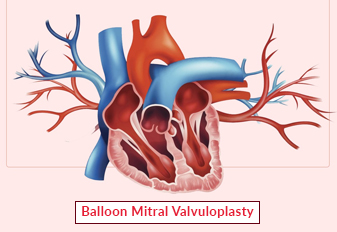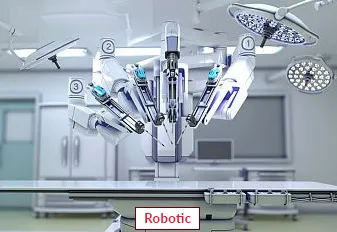Balloon Pulmonary Valvuloplasty

In recent years, balloon pulmonary valvuloplasty has proven to be an effective treatment for mild to severe valvar pulmonic stenosis in adults, children, and newborns. Studies using cardiac catheterization have provided extensive documentation of both the immediate and intermediate term follow-up outcomes. The process can also be used for bioprosthetic valve stenosis in the pulmonary position and pulmonary stenosis linked to other complex cardiac abnormalities. Miniaturization of balloon/catheter systems is required to further lower the complication rate and to establish positive outcomes at follow-up intervals of five to ten years.
Book an AppointmentAbout Balloon Pulmonary Valvuloplasty
Balloon pulmonary valvuloplasty is a catheter-based procedure that utilizes a balloon-tipped catheter to widen a narrowed pulmonary valve. Blood flow from the heart to the lungs is controlled by the pulmonary valve, which is located between the right ventricle and the pulmonary artery. The heart is strained and blood flow is obstructed when the pulmonary valve narrows or stenoses.
Balloon pulmonary valvotomy (BPV) is presently the treatment of choice for isolated pulmonary valve stenosis and has virtually replaced surgery as a treatment mode for this condition.
Procedure of Balloon Pulmonary Valvuloplasty
The purpose of this procedure is to ease the symptoms of congenital pulmonary stenosis. Many people who have this condition will not need valvuloplasty. Mild cases may not lead to any symptoms. Risk factors may vary based on your overall health, the heart problems present, and other health problems.
Procedure of Balloon Pulmonary Valvuloplasty
-
Anesthesia and Catheter Insertion: Balloon pulmonary valvuloplasty is typically performed under local anesthesia with sedation or general anesthesia. A catheter is inserted into a blood vessel in the groin and guided to the heart, where the pulmonary valve is located.
-
Balloon Placement and Inflation: Once the catheter reaches the narrowed pulmonary valve, a deflated balloon with a specially designed balloon tip is positioned across the narrowed area. The balloon is then inflated, exerting pressure on the valve leaflets and stretching the narrowed valve opening.
-
Balloon Deflation and Assessment: After a brief period of inflation, the balloon is deflated, allowing the blood to flow more freely through the widened valve. The cardiologist evaluates the results through imaging techniques such as echocardiography to assess the degree of improvement achieved.
-
Post-procedure Monitoring and Recovery: Following balloon pulmonary valvuloplasty, patients are closely monitored in a recovery area. Vital signs are regularly assessed, and any post-procedure complications or discomfort are addressed. Most patients can be discharged within a day or two, depending on their overall condition.
-
Follow-up Care and Monitoring: Patients who undergo balloon pulmonary valvuloplasty are typically advised to have regular follow-up appointments with their cardiologist. These visits may include echocardiograms or other imaging tests to evaluate the valve's function and monitor for any signs of re-narrowing
Require Assistance?
Get A Quick Callback From Our Healthcare Experts
Other Specilities We Cover

Robotic Heart Bypass Surgery

Heart Bypass Surgery




